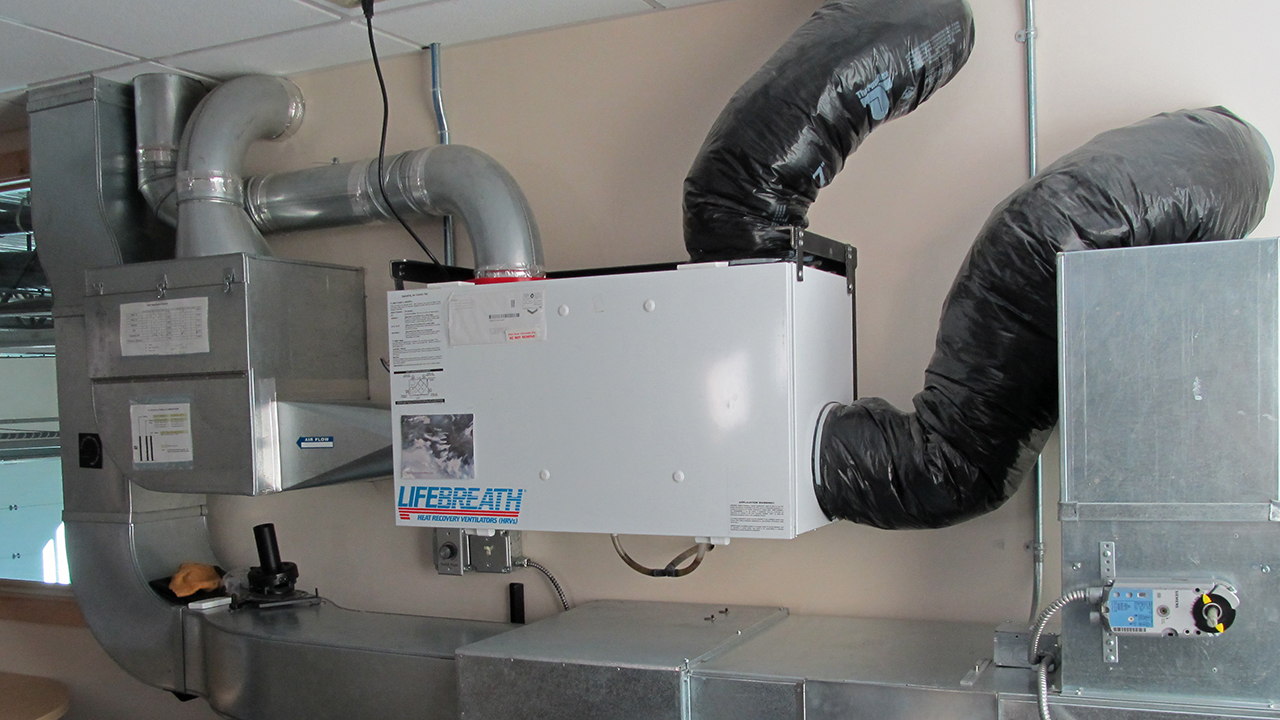The All-Inclusive Overview to the Uses of Heat Recovery Ventilation in Modern Buildings
Heat Recovery Ventilation (HRV) systems represent a considerable innovation in building technology (HRV Heat Recovery Ventilation). They supply an approach for trading stagnant interior air with fresh outdoor air while reducing power loss. This approach not just boosts interior air top quality however likewise contributes to energy performance in both domestic and commercial structures. Recognizing the different applications and benefits of HRV can disclose its important role in contemporary layout and sustainability efforts. The effects of this modern technology are worth checking out additionally
Recognizing Heat Recovery Ventilation Systems

Several modern-day buildings focus on power efficiency, recognizing warm recuperation ventilation (HRV) systems is important for enhancing indoor air top quality and minimizing power consumption. HRV systems function by transferring heat from stagnant indoor air to inbound fresh air, properly maintaining comfy interior temperature levels while reducing energy loss. These systems contain a warmth exchanger, fans, and ductwork that assist in the flow of air. Throughout winter, HRV devices catch and recycle heat from the outbound air, while in summertime, they can help cool incoming air. By continuously exchanging air, HRV systems additionally reduce humidity and the concentration of indoor pollutants. Proper installation and maintenance of HRV systems are important for their effectiveness and efficiency in improving general building performance and convenience.
Advantages of Heat Recovery Ventilation
Heat recovery ventilation systems use many benefits that enhance both power effectiveness and indoor air quality in modern-day buildings. By recording and reusing energy from exhaust air, these systems considerably lower home heating and cooling costs, causing lower power consumption. Furthermore, they maintain a steady flow of fresh exterior air, lessening the threat of interior air toxins and irritants. This continual exchange helps control moisture levels, avoiding mold and mildew development and guaranteeing a healthier living atmosphere. Additionally, HRV systems contribute to sustainability objectives by reducing general carbon footprints. Their capability to enhance ventilation without sacrificing thermal convenience makes them a valuable enhancement to modern building style, promoting both economic and eco-friendly benefits.
Applications of HRV in Residential Buildings
As homeowners significantly focus on power effectiveness and indoor air quality, the applications of warm healing ventilation (HRV) systems in residential buildings have actually ended up being a lot more common. HRV systems are particularly useful in snugly secured homes, where keeping fresh air flow is essential for avoiding dampness accumulation and indoor pollutants. They properly move warmth from outward bound stagnant air to incoming fresh air, minimizing power costs linked with heating & cooling. Furthermore, HRVs can improve comfort degrees by controling humidity and temperature level. They are additionally adaptable for various residential styles, consisting of single-family homes and multi-unit buildings. On the whole, incorporating HRV systems sustains lasting living methods while guaranteeing a healthier interior environment for residents.
HRV in Commercial and Commercial Setups
In commercial and commercial settings, the application of warmth healing air flow (HRV) systems has actually ended up being significantly critical for maximizing power effectiveness and keeping air quality. These systems successfully move warmth from exhaust air to inbound fresh air, reducing the need for additional heating or cooling. This not only reduces energy prices yet likewise adds to sustainability initiatives. Industries such as manufacturing, warehousing, and workplace buildings benefit click here for more considerably from HRV systems, as they assist regulate temperature and humidity levels, ensuring a comfortable and efficient environment. HRV systems help in eliminating pollutants and excess wetness, improving interior air top quality. As guidelines around air high quality end up being more stringent, the fostering of HRV innovation is most likely to grow, making it a vital element of modern-day business and commercial infrastructure.
Future Patterns in Heat Recovery Ventilation Modern Technology

Regularly Asked Concerns
How Does Heat Recovery Ventilation Influence Indoor Air High Quality?
Heat recovery ventilation greatly enhances indoor air high quality by constantly see this site exchanging stagnant indoor air with fresh exterior air while recuperating power. This procedure reduces pollutants, preserves ideal humidity levels, and guarantees a much healthier atmosphere for owners.
Can HRV Systems Be Mounted in Existing Structures?
HRV systems can certainly be set up in existing buildings. Retrofitting may need alterations to ductwork and ventilation designs, but it considerably improves power effectiveness and interior air top quality, making it a sensible option for older frameworks.
What Maintenance Is Required for HRV Equipments?

Exist Specific Climates Where HRV Is Much More Effective?
Heat recovery ventilation systems are specifically efficient in climates with substantial temperature differences in between periods. These systems enhance energy effectiveness by recouping warm from exhaust air, making them optimal for both cool and moderately warm atmospheres.
How Do HRV Systems Affect Power Expenses?
